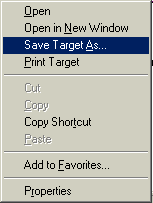
Custom Search
Kamis, 15 Januari 2009
Car Amplifier Basics by Chris Dro
Lets start by recognizing the different types of amplifiers. You've got your basic mono channel amplifier, your two channel amplifier, and then you have multiple channel amplifiers. A "channel" is simply one set of positive and negative terminals (+/-) coming out of the amplifier that you use to supply power, or drive, to your speakers or subwoofers. A mono channel amplifier has one set of terminals, two channel amplifiers have two, and multiple channel amplifiers range from anywhere between 3-5 channels. Now lets go into details discussing their best intended applications. We'll also answer the questions that are asked most frequently.
Mono Channel Amplifers-
Mono channel amplifiers tend to be class "D" amplifiers. Class "D" amplifiers have a high power to heat ratio, which is exactly what you are looking for when powering subwoofers that demand a lot of power. Class "D" amplifiers are also known to be very efficient. Since mono channel amplifiers work best at 2 ohms of impedance, they are best suited to drive either a singe 4 ohm "dual voice coil" subwoofer, or two 4 ohm subwoofers that only have "one voice coil" each.
Why are mono channel amps best suited for these setups? Because every speakers presents a load impedance to the power that is supplied to it from the amplifier. This load impedance is measured in a unit known as "ohms". Most subwoofer speakers present 4 ohms of resistance. If wired correctly, you will lower the load impedance that the amplifier sees. You will lower the impedance down to 2 ohms, which is where most mono channel amplifiers are build to perform the best.
Two Channel Amplifiers- A two channel amplifier is an amplifier that can operate one right, and one left hand channel. It is basically two mono channel amplifiers in a single box. Since two channel amplifiers are typically stable when presented with 4 ohms of impedance, they are best suited to drive either one 4 ohm "single voice coil" subwoofer, or two 4 ohm "dual voice coil" subwoofers. To run these setups, you have to "bridge" the channels coming from the amplifier. Not all two channel amplifiers are bridgeable, so be sure that your two channel amp is bridgeable before you buy it.
What is "bridging"? Lets say that you are looking to purchase a two channel amplifier that is rated at 500 watts RMS. You must know that the amplifier does not supply 500 watts of power from each channel. Instead, each channel alone will supply around 200-250 watts. In order to get the advertised 500 watts, you have to combine the two channels into one channel. This is called "bridging" the channels.
*Note- Be careful when "bridging" the connections because if it isn't done properly, then you will destroy your amplifier.
Multiple Channel Amplifiers- Multiple channel amplifiers allow you to hook up multiple speakers (typically front two and rear two) while still allowing you to control your balance and fading options. When shopping for multiple channel amplifiers, you will find that although most are still rated in the 2-4 ohm impedance range, some are rated around 20-40 ohms of impedance. The only time you would ever need an amplifier like this is if you were to wire multiple speakers in a "series". Multiple channel amplifiers can be used to run subwoofers, but you have to make sure that the amplifier's channels are bridgeable since most of the time, each channel alone of a multiple channel amplifier does not give out nearly enough watts.
What is "series" wiring? Instead of wiring each speaker separately to each channel of an amplifier, sometimes it is recommended that you wire two or more speakers together. Once the speakers are wired together, you want to wire the entire unit of speakers to one channel of the amplifier. To wire the speakers together, you simply run a speaker wire from the positive terminal of one speaker to the negative terminal of another speaker. Once you have done this, you run speaker wires from the channels of your amp to your remaining terminals.
*Note- You must keep track of load impedance when you are wiring speakers in "series". When wiring in a series, you simply add up the number of ohms of each speaker. Make sure your amplifier is rated to run at that high of an impedance.
Check out www.DominantCarAudio.com for more information about car audio, and for the largest selection of quality car audio equipment at the best possible prices.
About the Author
Chris has been an car audio enthusiast for over 5 years. He has gone into business for himself selling car audio products. In an ongoing effort to educate consumers, Chris has decided to begin writing articles regarding car stereo equipment.
Mono Channel Amplifers-
Mono channel amplifiers tend to be class "D" amplifiers. Class "D" amplifiers have a high power to heat ratio, which is exactly what you are looking for when powering subwoofers that demand a lot of power. Class "D" amplifiers are also known to be very efficient. Since mono channel amplifiers work best at 2 ohms of impedance, they are best suited to drive either a singe 4 ohm "dual voice coil" subwoofer, or two 4 ohm subwoofers that only have "one voice coil" each.
Why are mono channel amps best suited for these setups? Because every speakers presents a load impedance to the power that is supplied to it from the amplifier. This load impedance is measured in a unit known as "ohms". Most subwoofer speakers present 4 ohms of resistance. If wired correctly, you will lower the load impedance that the amplifier sees. You will lower the impedance down to 2 ohms, which is where most mono channel amplifiers are build to perform the best.
Two Channel Amplifiers- A two channel amplifier is an amplifier that can operate one right, and one left hand channel. It is basically two mono channel amplifiers in a single box. Since two channel amplifiers are typically stable when presented with 4 ohms of impedance, they are best suited to drive either one 4 ohm "single voice coil" subwoofer, or two 4 ohm "dual voice coil" subwoofers. To run these setups, you have to "bridge" the channels coming from the amplifier. Not all two channel amplifiers are bridgeable, so be sure that your two channel amp is bridgeable before you buy it.
What is "bridging"? Lets say that you are looking to purchase a two channel amplifier that is rated at 500 watts RMS. You must know that the amplifier does not supply 500 watts of power from each channel. Instead, each channel alone will supply around 200-250 watts. In order to get the advertised 500 watts, you have to combine the two channels into one channel. This is called "bridging" the channels.
*Note- Be careful when "bridging" the connections because if it isn't done properly, then you will destroy your amplifier.
Multiple Channel Amplifiers- Multiple channel amplifiers allow you to hook up multiple speakers (typically front two and rear two) while still allowing you to control your balance and fading options. When shopping for multiple channel amplifiers, you will find that although most are still rated in the 2-4 ohm impedance range, some are rated around 20-40 ohms of impedance. The only time you would ever need an amplifier like this is if you were to wire multiple speakers in a "series". Multiple channel amplifiers can be used to run subwoofers, but you have to make sure that the amplifier's channels are bridgeable since most of the time, each channel alone of a multiple channel amplifier does not give out nearly enough watts.
What is "series" wiring? Instead of wiring each speaker separately to each channel of an amplifier, sometimes it is recommended that you wire two or more speakers together. Once the speakers are wired together, you want to wire the entire unit of speakers to one channel of the amplifier. To wire the speakers together, you simply run a speaker wire from the positive terminal of one speaker to the negative terminal of another speaker. Once you have done this, you run speaker wires from the channels of your amp to your remaining terminals.
*Note- You must keep track of load impedance when you are wiring speakers in "series". When wiring in a series, you simply add up the number of ohms of each speaker. Make sure your amplifier is rated to run at that high of an impedance.
Check out www.DominantCarAudio.com for more information about car audio, and for the largest selection of quality car audio equipment at the best possible prices.
About the Author
Chris has been an car audio enthusiast for over 5 years. He has gone into business for himself selling car audio products. In an ongoing effort to educate consumers, Chris has decided to begin writing articles regarding car stereo equipment.
Langganan:
Posting Komentar (Atom)








.jpg)


 Directions for Downloading:
Directions for Downloading:
Tidak ada komentar:
Posting Komentar